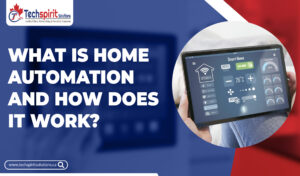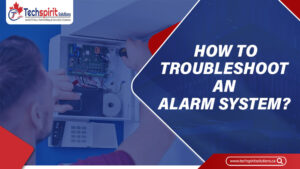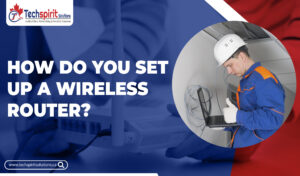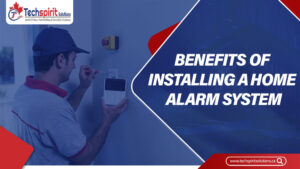In today’s world, where keeping things safe is super important, Access Control Systems have become essential tools for protecting your physical location. As businesses and individuals prioritize the protection of assets, data, and personnel, understanding access control system cost has become important.
This article explores the details of Access Control System cost, breaking down the factors that influence how they are priced. Access control options range from simple standalone systems to advanced biometric solutions, offering a wide range to meet various security requirements.Analyzing factors like system complexity, technology features, and installation and maintenance costs provides readers with valuable insights to make informed decisions when choosing an access control solution that fits both their security needs and budget constraints.
Table of Contents
ToggleAverage Access Control System Cost Per Door
Figuring out the average cost of a door access control system can be challenging due to the complex mix of various factors. The inclusion of essential components like door locks, card readers, and security exit buttons creates a dynamic range of pricing. On average, you can spend between $500 and $2,500 per door.
Pricing complexities arise from factors such as the type of security systems used, installation process, and the selection of access control hardware or software. High-end systems can increase costs, whereas simpler setups may provide cost savings.
Types of Access Control System
Here are the types of Access Control System and their average cost per door.
1. Keypad Access Control Systems
A fundamental component in access control, keypad systems offer a cost-effective solution, allowing entry through the input of a designated code. With an average cost ranging from $500 to $1,500 per door, their affordability and versatility make them widely adopted across various settings.
2. Smartphone Access Control Systems
Incorporating modern technology, smartphone access control systems enable entry through mobile applications or QR codes. These systems typically fall within the price range of $1,000 to $2,500 per door. The integration of advanced technology and software contributes to their higher cost, providing users with a seamless and tech-savvy access solution.
3. Access Card or Key Fob Access Control Systems
Reliable and user-friendly, these systems operate through the use of key fobs or access cards. The cost per door typically ranges from $600 to $2,000, influenced by factors such as brand, quality, and the inclusion of bundled software or additional features. Offering a practical balance between reliability and affordability, these systems find widespread application.
4. Biometric Access Control Systems
At the forefront of security technology, biometric systems recognize unique physical or behavioral attributes for access. With costs ranging from $1,500 to $3,500 per door, their technology and heightened security level make them a premium choice.
Factors That Affect Access Control System Cost
Here are the factors that affect access control system cost
1. Access Control System Type
The choice of access control system plays a crucial role in shaping overall costs. High-tech solutions like biometric access control tend to have higher price points compared to more traditional options like keypad systems.
2. Features, Brand Reputation, and System Capabilities
Factors such as included features, brand reputation, and overall system capabilities contribute significantly to pricing differentials. For instance, standalone door access control systems may be more budget-friendly than those with advanced remote access functionalities.
3. Licensing Fees
Recurring licensing fees for proprietary software are a common factor affecting access control costs. The fees, essential for software updates and functionality, vary based on system complexity and brand reputation.
Access Control System Installation Considerations
Here are the things to consider while installing access control system :
1. Number of Access Points
The fundamental consideration in access control system installation revolves around the number of access points or doors that need securing. More doors translate to increased equipment, labor, and a subsequently higher overall cost. Assessing the scale of the security requirement is pivotal in estimating the financial investment required for an effective access control system.
2. Integrated Security System
Integration with other security components, such as video surveillance. Integrated systems with advanced security features can be more expensive due to the complexities of combining multiple technologies. Evaluating the necessity for an integrated approach ensures both comprehensive security and a clear understanding of potential financial implications.
3. Electrical Upgrades
Implementing an advanced electronic access control system may necessitate upgrades to the existing electrical infrastructure. If the current setup cannot support the system’s requirements, factoring in the cost of electrical upgrades becomes essential. This consideration underscores the importance of aligning the chosen access control system with the electrical capabilities of the facility.
4. Materials & Labor
The choice of materials, including cabling, controllers, and readers, plays a significant role in cost determination. Additionally, labor costs fluctuate based on installation complexity, technician expertise, and regional rates. While high-quality materials and skilled professionals may command a premium, they ensure a durable and efficient setup, emphasizing the importance of balancing cost and quality.
Access Control System Components and Their Costs
Different Access Control system components and how they affect the overall cost
1. Locking Hardware
Locking hardware, encompassing electronic locks, strikes, and magnetic locks, impacts costs based on quality, brand, and features. Premium, highly secure locks with advanced attributes may incur higher expenses, influencing the overall system cost significantly.
2. Software License or Monthly Service Fees
The software managing the access control system incurs recurring license or maintenance costs. The platform’s capabilities, brand reputation, and chosen features influence these expenses, emphasizing the need for careful consideration when selecting software to align with both functionality and budget.
3. Access Control Accessories
Including mounting hardware, cables, backup power supplies, and supplementary devices, accessories directly impact the final cost. Critical for system functionality, the choice and number of accessories influence longevity and reliability, underscoring the importance of strategic selection in managing overall expenses.
Potential Hidden Costs
Beyond the upfront costs of access control systems, organizations must be vigilant about potential hidden expenses that can impact their budget. Software updates, essential for keeping the system secure and up-to-date, often come with additional expenses as technology evolves. Training employees and security personnel to operate the new system effectively incurs extra costs but is crucial for optimal utilization.
Replacement of cards or fobs, necessary due to loss or wear over time, and periodic battery replacements for wireless systems contribute to ongoing expenses. Emergency repairs, arising from malfunctions or unexpected damages, may require urgent fixes at a premium.
Conclusion
In conclusion, choosing the right access control system is crucial for safeguarding your space. The access control system cost vary depending on the type of system you pick – from key cards to biometrics. Don’t forget hidden expenses like software updates or training. Regular maintenance is a must to keep everything running smoothly and can even help lower insurance premiums by showing you take security seriously. An advanced system not only secures your premises but can also save you money in the long run.








